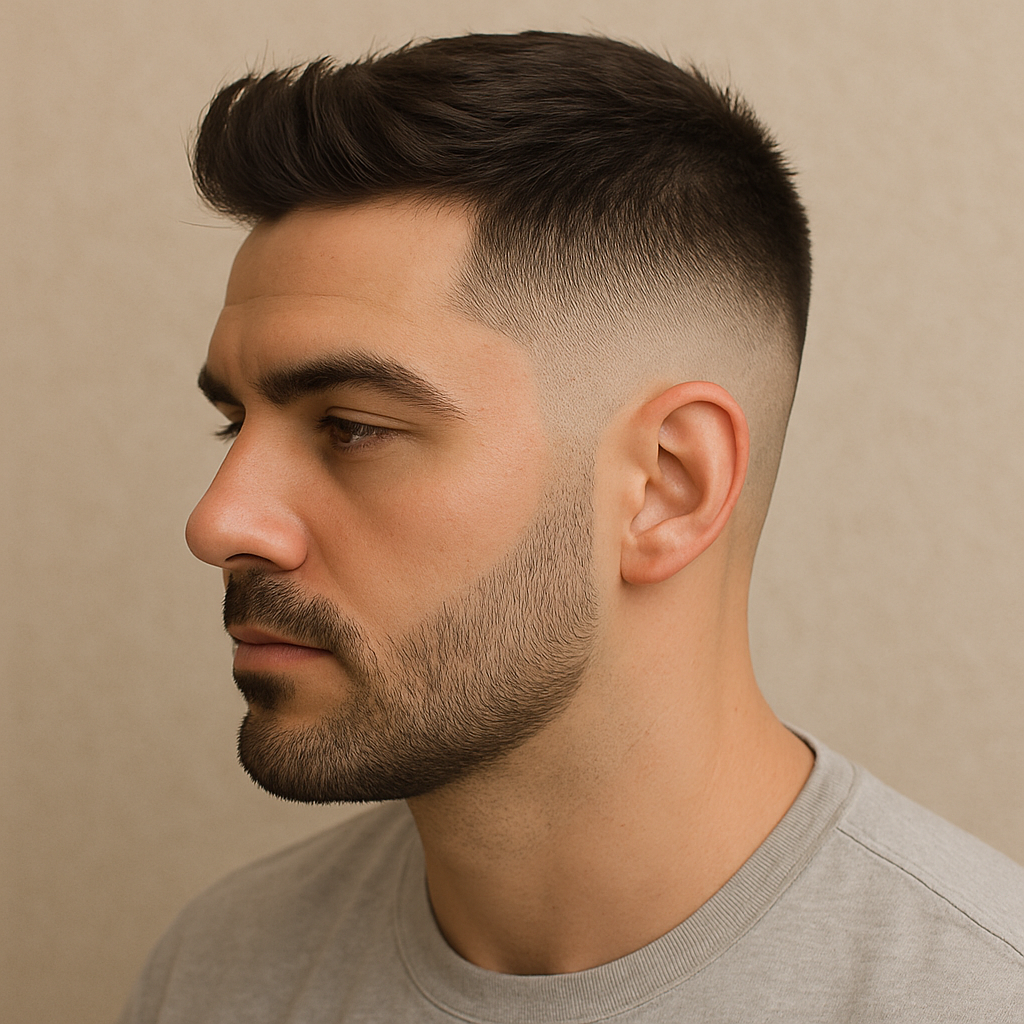When it comes to men’s haircuts, few styles strike the perfect balance between classic and trendy like the low taper fade. Whether you’re a fan of clean, subtle fades or love to keep your grooming sharp, this haircut can instantly elevate your style. Let’s dive into everything you need to know about this versatile look.
Introduction to the Low Taper Fade
What Is a Low Taper Fade?
A low taper fade is a haircut where the hair gradually shortens from the top down to the neckline, with the fade starting low around the ears. Unlike high fades, which create a bold contrast, a low taper fade offers a softer, more subtle transition. It’s a go-to choice for men who want a polished yet low-maintenance style.
Why the Low Taper Fade Is So Popular
The low taper fade’s popularity comes from its versatility. It looks good on nearly all hair types and face shapes, works in both casual and professional settings, and pairs perfectly with a variety of hairstyles, from pompadours to curls.
Different Types of Low Taper Fade Haircuts
Classic Low Taper Fade
The classic version features a smooth fade that gradually tapers near the ears and neckline, making it ideal for a professional, clean-cut look.
Low Taper Fade with Curly Hair
For men with natural curls, this style enhances texture while keeping the sides neat. The fade makes curls pop and adds definition to the top.
Low Taper Fade with Straight Hair
Straight hair works wonderfully with this style, as the fade blends seamlessly into the top for a sleek and structured appearance.
Low Taper Fade with Long Hair on Top
Leaving the top long allows for versatile styling options, like slick-backs, quiffs, or messy textures, while the fade keeps the overall look sharp.
Low Taper Fade for Short Hair
Short hair combined with a low taper fade delivers a neat, no-fuss haircut that’s easy to maintain and style daily.
Low Taper Fade with Beard
Pairing a low taper fade with a beard creates a balanced and masculine appearance. The fade can even be blended into the beard for a seamless look.
How to Ask Your Barber for a Low Taper Fade
Understanding Barber Terminology
Barbers often use terms like “fade,” “taper,” and “skin fade.” A taper means a gradual decrease in hair length, while a fade involves blending hair into the skin. For a low taper fade, specify “low” to indicate the fade starts near the ears.
Communicating the Desired Style
Showing a reference photo is the easiest way to ensure your barber nails the look. Mention if you want a skin fade, how long you want the top, and whether you prefer a side part, textured top, or slicked style.
Step-by-Step Guide to Achieving a Low Taper Fade
Tools Needed for the Haircut
- Clippers with different guards
- Scissors for trimming the top
- A comb for blending
- Hair trimmers for sharp edges
The Fading Process Explained
The barber starts by trimming the sides with clippers, gradually changing guards to create a seamless transition. The lowest point around the ears is faded the shortest, blending upward to the top.
Tips for a Clean and Professional Look
- Always keep the neckline sharp
- Ensure the blend is smooth with no harsh lines
- Trim the top based on your desired hairstyle
Styling Your Low Taper Fade
Best Hair Products for Styling
Depending on your top length and hair type:
- Pomade for slick looks
- Clay for matte, textured styles
- Curl cream for enhancing natural curls
Daily Maintenance and Grooming Tips
- Wash and condition regularly to avoid buildup
- Visit the barber every 2–3 weeks for a refresh
- Use a small amount of product to keep it looking natural
Who Can Rock a Low Taper Fade?
Face Shapes That Suit the Style
Oval, round, and square face shapes all benefit from the low taper fade because it elongates the face and sharpens the jawline.
Hair Textures That Work Best
This cut works for straight, wavy, and curly hair. Even thick or coarse hair looks cleaner with a taper fade, as the fade removes bulk from the sides.
Low Taper Fade vs Other Popular Fades
Low Taper Fade vs Mid Fade
A mid fade starts higher on the head, creating a bolder look. The low taper fade is more subtle and professional.
Low Taper Fade vs High Fade
High fades are dramatic and edgy, while low tapers are subtle and classic. If you want a versatile, low-maintenance style, low taper is the way to go.
Which Fade Is Right for You?
If you want a sharp but understated look that transitions easily from office to casual outings, the low taper fade is a perfect choice.
Pros and Cons of the Low Taper Fade
Advantages of This Haircut
- Versatile for all occasions
- Works with many hair types and lengths
- Low maintenance compared to high fades
Things to Consider Before Getting It
- Requires touch-ups every few weeks
- Might look too subtle if you prefer bold hairstyles
Celebrities and Influencers Who Rock the Low Taper Fade
Celebrities like Zayn Malik, Drake, and Chris Evans have sported low taper fades, proving that this style is timeless, trendy, and red-carpet ready.
Conclusion
The low taper fade is a stylish, versatile haircut that’s perfect for anyone who wants a clean, professional, and low-maintenance look. Whether you have curly, straight, or wavy hair, this haircut can elevate your style effortlessly. Pair it with your favorite hairstyle, maintain it regularly, and you’ll always look sharp.
FAQs About Low Taper Fade
How often should I get a low taper fade?
Every 2–3 weeks is ideal to keep the fade looking fresh.
Can a low taper fade work on thinning hair?
Yes, it can make thinning hair look fuller by removing bulk from the sides.
Is a low taper fade suitable for professional settings?
Absolutely! It’s subtle, neat, and perfect for office environments.
What is the difference between a low taper fade and a skin fade?
A skin fade blends down to the skin, while a taper fade keeps some hair at the neckline.
How can I maintain my fade at home?
Use clippers for small touch-ups, keep the top styled, and visit the barber for proper fades regularly.


